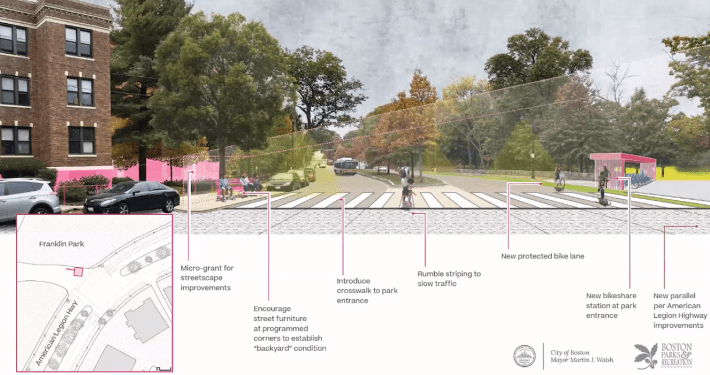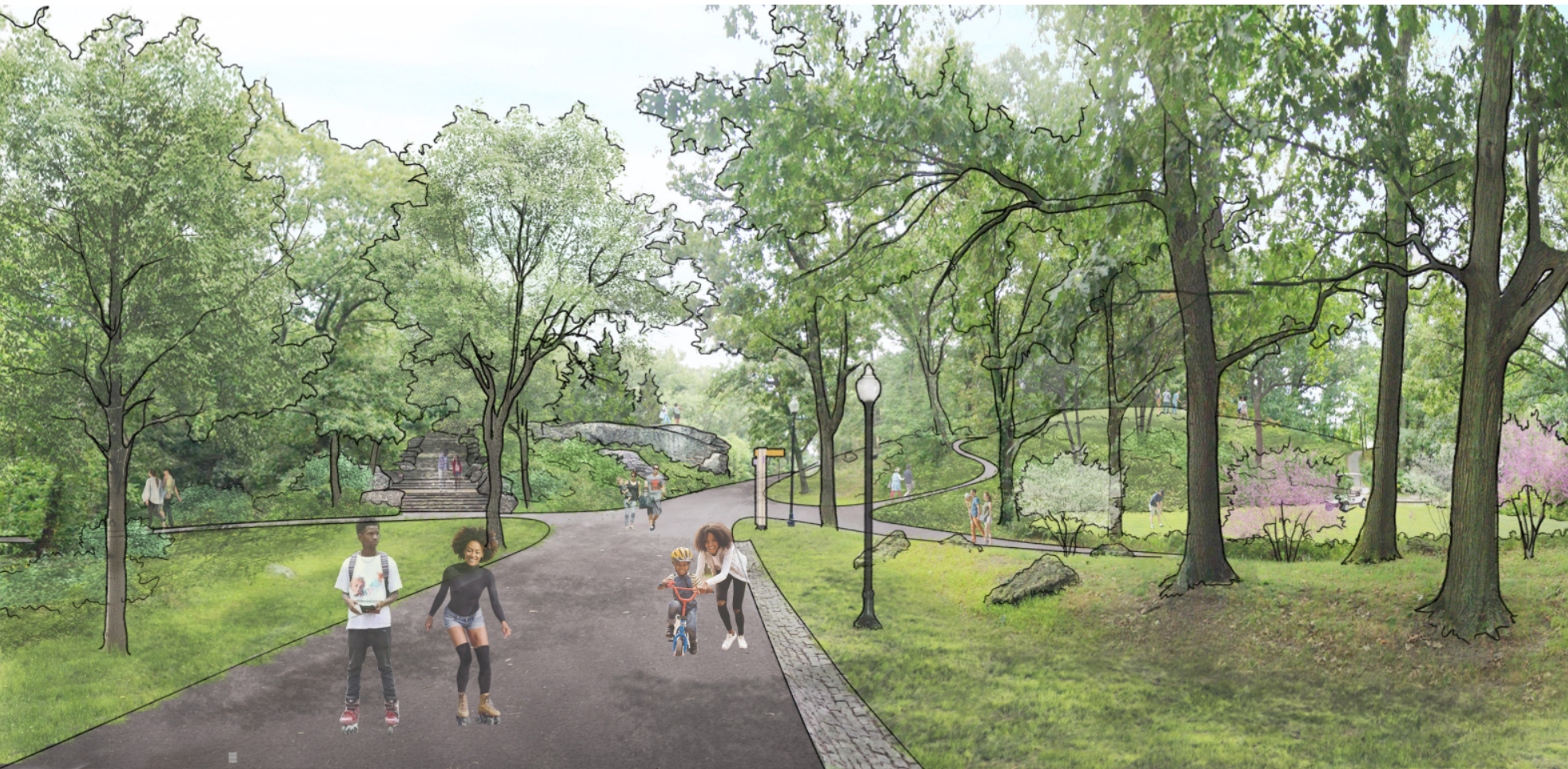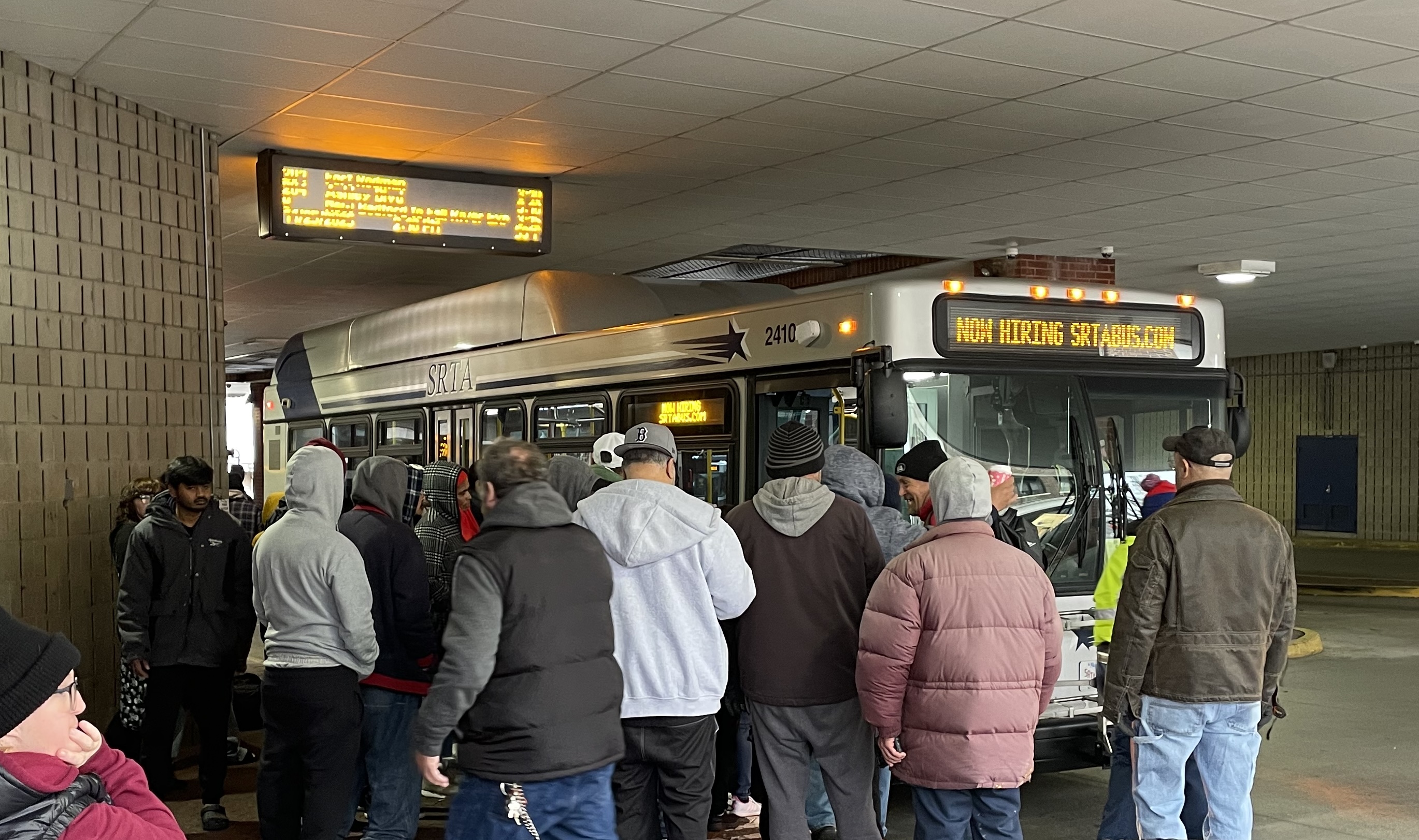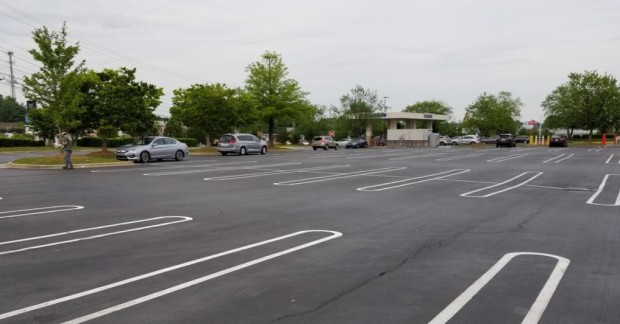A new Boston Parks Department plan for Franklin Park is proposing to end drive-through traffic on a major park roadway in order to prioritize recreation, wildlife habitat, and bike and pedestrian mobility.
Parks officials and consultants working on the city's Franklin Park Action Plan unveiled their draft proposals for Boston's largest public park in a Zoom teleconference on Wednesday afternoon. The plan aspires to remove barriers and improve the park's connectivity to surrounding neighborhoods, and towards that end, the plan is proposing significant enhancements to the park's roadways, paths, and entrances.
One of the plan's more transformative proposals would ban through-running car traffic from Circuit Drive, and restore the roadway as a broad path for recreation and non-motorized transportation (see rendering above).
"We want to elevate multimodal routes for bikes and pedestrians," said Lydia Gikas Cook, a landscape architect working on the plan, during Wednesday's presentation. "Negotiating car traffic on Circuit Drive has been a challenge since cars were introduced decades ago.... with only 2 crossings on its entire length, it effectively cuts the park in half."
The plan to ban cars from Circuit Drive has precedents from other cities: in 2018, after many years' worth of partial road closures, New York City permanently banned cars from the park loop roadways of Central Park and Prospect Park – two landmark parks that were also designed by Frederick Law Olmsted, Franklin Park's designer.
The proposed plan for Circuit Drive would still allow motorists and MBTA buses to enter the park on shorter, local-access loops on the park's edges (one around the zoo, and one near Shattuck Hospital).
But motorized through traffic between Forest Hills and Blue Hill Avenue would be prohibited:

Besides improving safety and comfort for park users, project consultants hope that a narrower, quieter Circuit Drive will improve habitat for the park's wildlife.
The Parks Department and its consultants are also engaged in conversations with the Boston Transportation Department (BTD) to enhance access to the park from surrounding streets. Plans call for upgraded sidewalks and traffic calming on American Legion Highway and Blue Hill Avenue, more Bluebikes docks, and better wayfinding signage to connect the park with its surrounding neighborhoods.

Peabody Circle, the main park entrance facing Blue Hill Avenue at its intersection with Columbia Road, would also see major changes aimed at reducing the negative impacts of automobile traffic.
The area is one of the most prominent gateways to Franklin Park, but "the arrival doesn't rise to the occasion," said Kristin Frederickson, Associate Principal for Reed Hildebrand, during Wednesday's presentation. "The space in Peabody Circle is dominated by parking, cars, and idling buses, leaving limited space to just be."
The planners would like to reduce the number of roads and driveways that connect into the park from Blue Hill Avenue and turn Peabody Circle and transform the circle itself – which is currently a parking lot – into a flexible pedestrian-oriented flexible space for markets, events, and performances.
"Peabody Circle will transform from a place for cars to the community's front porch," said Frederickson.
Consultants working on the plan are now soliciting public feedback on their proposals.
"This is the first time we're putting (the plan) out there for public review," said Brie Hensold, another consultant working on the Action Plan. "Your comments on (Circuit Drive) are one of the highest-priority things we want to hear about."
The planners have also launched an online survey to collect public input.






